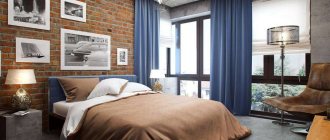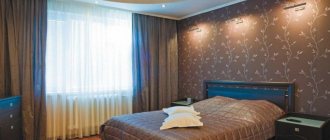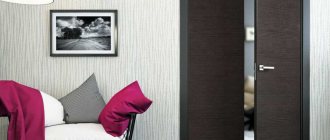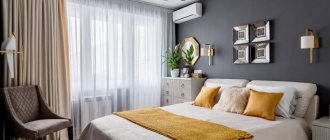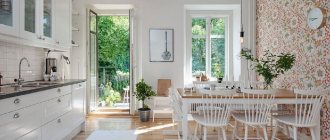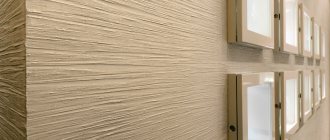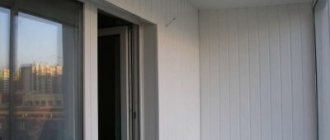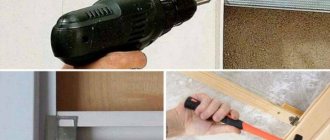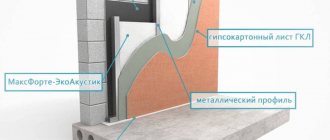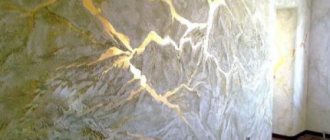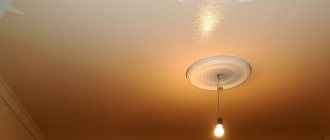Wall decoration with MDF panels is, today, one of the most popular jobs. The material has proven itself to be the most environmentally friendly and cheap compared to other wall panels.
If the finishing issue remains unresolved, MDF wall panels should be considered.
What are MDF panels?
The panels are produced using waste from wood processing enterprises. The composition does not contain harmful polymer resins that are released during operation and cause allergic reactions.
MDF (fine fraction) is made from tiny wood particles that are formed into a board by pressing.
The main ingredients are crushed sawdust, which is heated in ovens until lignin appears. Lignin is a natural resin secreted by wood, which is the binding element in the compressed board. The workpiece is cut to the required dimensions and covered with a special film to give it a beautiful wood texture or a variety of colors. But like any finishing material, MDF has its advantages and disadvantages.
The strength of such a connection is ensured by lignin, which is released from wood fibers as a result of high-temperature heating.
Advantages of wall panel:
- Availability. Thanks to cheap raw materials and simple manufacturing technology, the material has a low price.
- Easy to install. You can install MDF panels yourself without using complex tools or involving specialists.
- Appearance. The created wood structure on the surface creates a beautiful finish, and the variety in shades will allow you to match the panel to the tone of other materials.
- Undemanding to the base. When installing the panel to a wall using lathing, there is no need for additional surface preparation work.
Such wall panels have valuable characteristics that make them so popular.
The main disadvantages are the low resistance of the material to moisture and fire. And by installing the frame in the room, the useful area is reduced, but an additional air gap is created between the wall and the panel, this increases heat and sound insulation.
Such material does not pose a threat to human health.
Types of MDF wall panels
Manufacturers offer a large selection of types of finishing materials, differing in different characteristics, which can be selected for residential and commercial premises.
If all operating rules are followed, the panels last for a very long time.
Types of MDF panels:
- Form. Tiles - rectangular or square in shape with clear boundaries, which can be glued to the wall, are produced with interlocking joints. Lining – produced in the form of stacked elements with a mounting lock. Slab - used in rooms where the integrity of the finish is required, the seams are treated with decorative elements.
- Size. Width 150 – 900mm, length 2400 – 2700mm, thickness 3-9 mm depending on the shape of the product.
- Coating. Veneering – a thin layer of natural wood veneer is glued to the base of the panel and varnished. Lamination - the surface is covered with a melamine film that imitates a wooden surface. Painting – allows you to produce panels in different colors.
- Connection type. Locking – allows for quick and easy installation. Frame - creates a stronger connection with the base and makes it possible to lay communications in the cavity. Adhesive - the elements are attached to the wall using a special glue, but this type requires the most even surface possible.
Finishing with MDF panels
Finishing with MDF panels
For the construction market, panels are available in three different form factors:
- slatted - long narrow strips that are excellent for cladding rounded walls,
- tiled - cut into rectangles of different shapes and sizes,
- sheet - in the form of large continuous sheets covering a large area.
Given its excellent performance characteristics, MDF is used both as wall panels and for ceiling decoration, and special varieties are intended for covering building facades.
In public institutions you can often find such wall cladding: where many people pass every day, the optimal design option would be a hygienic, durable and safe material.
Advice! In residential buildings, special varieties of MDF are excellent for finishing the bathroom, kitchen, and hallway. If desired, you can refresh the interior with decorative volumetric trim, making it “play” in suitable lighting.
A distinctive feature of finishing with such panels will be the speed and ease of installation: they are mounted on a sheathing, which allows you to hide all communications, provide additional heat and sound insulation, and also does not require special surface preparation, because no one will see the unevenness!
Application areas of panels
The strength of the material allows it to be used in all types of interior finishing work: wall paneling, floor covering with laminated sheets and ceiling cladding, installation of interior partitions and the manufacture of decorative interior elements. MDF is used in the production of furniture for facades and tabletops, interior doors and type-setting cladding elements.
Different decor options can be chosen according to the design of the room.
Uncoated MDF sheets are used for continuous roof sheathing and as additional heat and sound insulation material on all surfaces. Caution should be observed only in rooms with constant high humidity, which negatively affects the material.
They perform a protective function and also improve sound insulation.
MDF moisture resistant
MDF is moisture-resistant
In rooms with high humidity, we are accustomed to seeing tiles - a traditionally resistant and practical material. But the tile itself and its installation are not the cheapest pleasure. An alternative can be moisture-resistant MDF - especially densely pressed boards in which almost all the pores are closed. They do not swell from water vapor and do not suffer from condensation, and washing and disinfecting them is a pleasure!
The advantage of moisture-resistant MDF is not only its aesthetic appearance (such panels allow you to create an interesting and unusual design), but also the high strength of the material, which will last at least 15 years even in extremely humid conditions.
Selection of quality panels for wall decoration
The durability and durability of the coating largely depend on the manufacturer and his compliance with all technological cycles during production. Many people try to save money on binding elements and add harmful resins to the composition; such material can no longer be called environmentally friendly.
Installation does not require radical changes to the walls and occurs quite quickly.
When choosing, you should give preference to European and domestic manufacturers who guarantee high quality and safety of products. Regardless of the type of room, it is better to cover the walls with panels with high moisture-resistant characteristics, which are impregnated with special compounds; this will prevent swelling and deformation of the panels when water gets on the surface.
More affordable compared to solid wood products. No costs required throughout the entire service life.
Interior finishing with MDF panels
Interior finishing with MDF panels
Since interior finishing with MDF panels leaves free space between the wall and the finishing, there is an excellent opportunity to make additional sound insulation: lay foam plastic or glass wool, which “knits” external sounds well.
When working in a damp room, you will have to remove the plaster: waterproof panels are treated with various mold repellents, but the space under them will become an excellent breeding ground for fungus. So the old finish needs to be removed and the wall treated with antiseptics.
Advice! When purchasing panels for kitchen renovation, you must be sure to specify what temperature they are intended for: it’s quite hot near the stove!
The market for MDF products is now developing very quickly: everyone needs not only beauty, but also safety, which is why wood panels are used in all areas of life. Beautiful and original decoration is a sign not only of good taste, but also of care for those around you.
How to install panels yourself
Installing MDF panels on the wall with your own hands is quite simple; minimal skills in working with the necessary tools will be enough.
A wide range of models will allow you to find the right option depending on your preferences, purpose and budget.
Required tools and materials for installation:
- An electric jigsaw for cutting material to the required size; if the amount of work is small, you can get by with a hacksaw with fine teeth, so the cut edge will be more accurate.
- A tape measure for measurements and a building level for leveling the panels horizontally and vertically.
- A drill for drilling the necessary mounting holes and a screwdriver for attaching the material to the frame structure.
- Nails, dowels and screws or liquid nails for frameless installation.
- A wooden block with guide rails when making a wooden frame or a metal profile.
In order to save time and effort, it is better to carry out a large constant amount of work with power tools.
The installation process depends on the method of fastening; installing a frame system is a more labor-intensive process, but allows you to do without preparing the base. Makes it possible to install an additional insulating layer and lay communications into the wall cavity. The adhesive technology is simpler, but in order to avoid the panels moving away from the wall, it requires cleaning of old materials and final leveling of the surface.
MDF wall panels can be mounted in different ways.
Wall surface preparation and marking
Upon completion of the preparatory work on cleaning the walls and leveling, markings are made using a building level. It is necessary to determine the lower and upper attachment points and draw a horizontal line around the perimeter of the room. These lines will become the reference point for the guides, which are attached to the wall in increments of 50 cm. With correct measurements and drawing the horizon line, there will be no problems with installation.
The advantage of wood is ease of installation, environmental friendliness and the use of fewer hardware and connecting parts.
Installation Methods
There are only two ways to install MDF panels, each of which has its own advantages and disadvantages. Which method to choose depends on the condition of the walls in the room and the need for additional insulation.
Fastening the panel with glue
The easiest way is if you have a flat base. Before carrying out work on sheathing the wall, it is necessary to prime the base and treat it with an antiseptic.
It can not only be used for gluing, but also for leveling recesses in places where screws are screwed in.
Fastening with glue begins with solid sheets, and corner elements and fragments are fixed last. The glue is applied in a continuous line around the perimeter of the sheet and dotted in the middle. Next, the panel is pressed against the wall and fixed.
This method is suitable for covering the ceiling and floor in an apartment.
Frame installation
This method is used when the walls are very uneven and an additional insulating layer is required.
Please note that in rooms with high humidity, a metal frame is installed, and when installing a wooden structure, all elements must be treated with antiseptic compounds.
Installing a metal frame has its own difficulties - it requires a certain skill and the acquisition of special tools.
The design of the frame depends on the direction of fastening the panels to the wall; in the case of a horizontal direction, a vertical sheathing pattern is installed. When vertical, horizontal pattern.
Installation stages:
- The first guides are installed in the corners, then the transverse ones are attached to nails or screws.
- Regardless of the lathing material, a step of 40-60 cm is maintained between the slats.
- U-shaped hangers are installed on the slats in increments of 50-60 cm; these will be the mounting points for the panel.
- The ridge of the first corner panel is cut off and fastened with self-tapping screws to the fastening points, all subsequent elements are joined and secured.
How to beautifully join the corners of the panels
The final stage of wall cladding with MDF panels is the processing of corners and joints. Horizontal lines along the ceiling and floor are covered with skirting boards in the same color as the panels. For corners, special corners are sold, which, if carefully glued, will be almost invisible.
Gaps in the corner, as well as between the wall and the floor (ceiling), are closed using corners and decorative skirting boards (they can be glued on).
It is important that the calculation of additional elements and the purchase are best done immediately with the panels, otherwise there may be a significant discrepancy in color. All elements are attached to a thin layer of glue, and if excess appears on the surface, it is better to wait until it dries completely and then carefully scrape it off. “Liquid nails”, which are sold in different colors, are perfect for attaching all elements.
To eliminate gaps between slabs and mask seams, wood sealant is perfect; it can be chosen in the same color as the trim. Minor chips and scratches are well masked with wax pencils of different colors.
Frame for MDF panels
MDF panels can be mounted on a wooden sheathing or metal profile. Let's take a closer look at the process of creating a frame in each case.
Wooden sheathing
Features of installation of lathing made of wooden bars:
- To make the sheathing, wooden blocks are used, pre-treated with impregnation to protect against mold and rot, the size of which must correspond to the height of the room.
- When carrying out additional insulation of the room, the thickness of the beams should be similar to the thickness of the heat-insulating material.
- If there is a lot of humidity and dampness in the room, as well as if there are brick walls, you should refuse wooden sheathing.
- Use only well-dried wood, as otherwise the paneling may become deformed.
- Install the sheathing in the direction perpendicular to the installation of MDF panels, retreating 3-5 cm from the floor, 2-3 cm from the ceiling.
- First you need to install vertical bars in the corners and along the edges of door and window openings. The correct position should be controlled using a plumb line.
- When attaching the planks, maintain a step that is 500-700 millimeters; the step between horizontal bars should reach 600-700 mm.
- To fasten the sheathing, use dowel-nails or self-tapping screws, which have a diameter of 4 or 6 mm, as well as plastic sockets.
Metal sheathing
For the frame, UD (uprights) and CD (horizontal elements) metal profiles with special fasteners are used, which are hangers and connectors. The sheathing pitch is the same as for wooden blocks. The CD profile is inserted into the UD and advanced to the installation site. Self-tapping screws are used to attach the profile to the wall and to each other. A circular saw is used to cut metal profiles. Fasteners will be needed if you are installing the sheathing on the ceiling, or if you are making it only from a CD profile.
Useful recommendations for installing MDF panels on apartment walls
To avoid possible installation errors, follow a few tips:
- Buy material with a small margin, about 5% of the total volume for possible cuts.
- When facing a street wall that requires insulation, it is necessary to cover the base with a vapor barrier material.
- It is better to fix all fasteners with self-tapping screws; they are easier to unscrew in case of a possible mistake.
When covering the walls of an apartment with MDF panels, the house will always have a healthy and cozy atmosphere, and the interior will be transformed beyond recognition.
